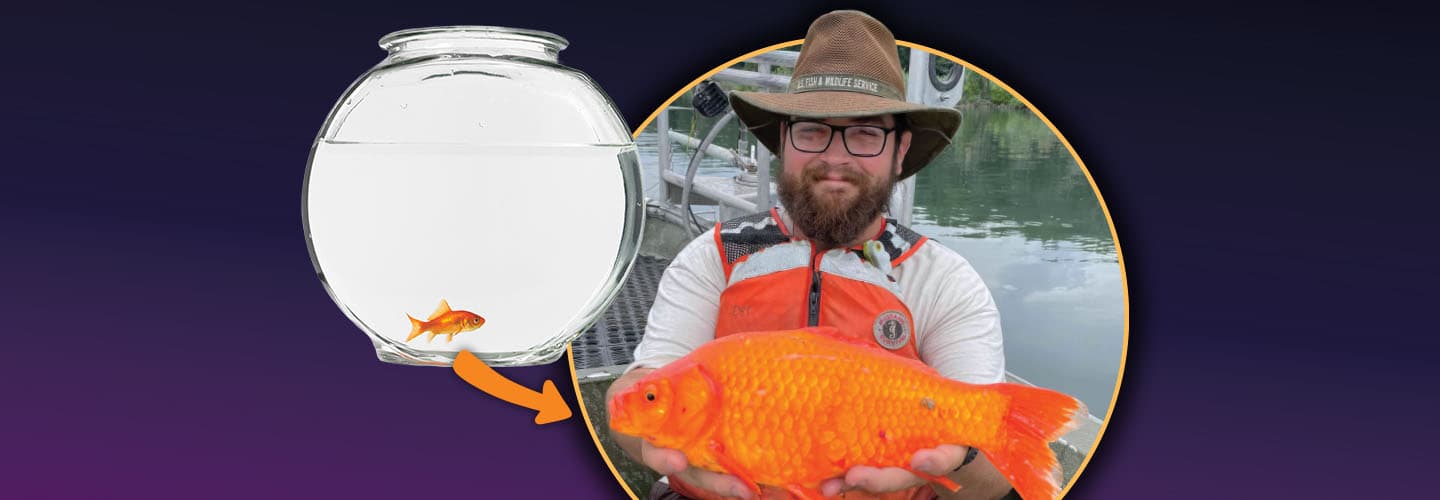People couldn’t believe what they were seeing. In February, the U.S. Fish and Wildlife Service posted a photo of a goldfish on social media. The fish was nearly the size of a football! Researchers in Pennsylvania had found it while working in Lake Erie.
Experts say what made for an attention-grabbing photo was also a sign of trouble. Goldfish in ponds, lakes, and rivers in the U.S. are an invasive species. That term refers to animals or plants that move into an area and harm the species that already live there.
Researchers estimate that tens of millions of goldfish could be living in U.S. waterways. They have been found in all 50 states—from warm ponds in Florida to chilly lakes in Minnesota. How did they get into so many bodies of water? And why do they grow so big?
People couldn’t believe their eyes. In February, the U.S. Fish and Wildlife Service posted a photo of a goldfish online. The fish was nearly the size of a football! Researchers in Pennsylvania had found it in Lake Erie.
The fish made for an attention-grabbing photo. But experts say it was also a sign of trouble. Goldfish in ponds, lakes, and rivers in the U.S. are an invasive species. Invasive species are animals or plants that move into an area and harm the species that already live there.
Researchers say that millions of goldfish could be living in U.S. waterways. They have been found in all 50 states. They’re in warm Florida ponds as well as in chilly Minnesota lakes. How did they get into so many bodies of water? And why do they grow so big?

